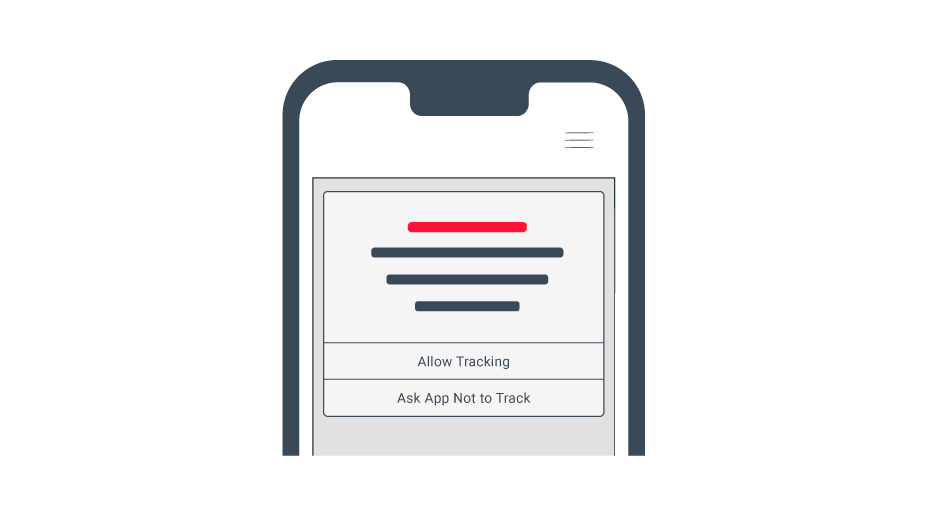Get Ready for iOS 14: 3 Ways to Future-Proof your Advertising
Data and privacy are hot topics in the industry. The last few years have seen a number of high-profile steps to give consumers back control of their data. In 2018, the European Union set the ball rolling with its GDPR legislation. Google then announced it will be phasing out third-party cookies by 2022, and in California, citizens can control who collects, uses and shares their data under state law.
The next big play has come from Apple. With the release of its iOS 14 operating system in September 2020, Apple announced the introduction of an App Tracking Transparency (ATT) feature, which will start to roll out in an early spring 2021 update. The ATT gives users greater freedom to opt out of any type of targeting or tracking when they download an app on the Apple App Store, rather than assume automatic consent.
This could make life more difficult for advertisers. Devices store a rich data feed that’s extremely useful for profiling and targeting users, creating personalised communications and measuring how well campaigns are working. Apple’s decision allows users to keep that treasure trove hidden. Put simply, apps will need to ask permission instead of helping themselves.
Tighter control — but at what cost?
The change will have far-reaching implications. As users, we will need to make individual decisions about the data we share on every app we use. We may also need to pay for more content than before. Free apps and the entrepreneurs that build them may need to find different ways to make an income, and turn to subscriptions and in-app payments, if advertising revenue is reduced.
Platforms will need to adapt their software to support the iOS 14 update. For example, Facebook has voiced strong concerns about Apple’s move, but has agreed to follow the change, saying: “personalised ads and user privacy can coexist”.
All advertisers that use Facebook and other platforms to optimise, track and report on advertising effectiveness will be impacted, as the new protocols limit the data that can be shared across apps and websites.
If people opt out, there will be less data for advertisers to work with. Targe

ting and conversion data will be more restricted, changing the way advertisers traditionally reach customers.
However, it’s not the “walled garden” advertising solutions such as Facebook and Google that will be hardest hit. They can lean on their vast in-platform user ID graphs to provide effective audience targeting solutions. It’s the open web that will suffer the most, with apps and programmatic placements forced to fend for themselves with a limited supply of market intelligence.
Keep calm and get creative
While there is concern about how advertisers will continue to target their messaging to specific audiences — iOS 14 does not mean the end of personalisation. Far from it.
Personalisation has changed a huge amount over the years. The pendulum swung from the days of one-size-fits-all marketing (where people were flooded with irrelevant ads), all the way to hyper-personalisation (which for some, was considered a little ‘creepy’). Today the pendulum sits somewhere in-between, where brands can use first-party and contextual data to create relevant experiences, without compromising data and privacy.
So, the digital advertising world won’t stop turning with iOS 14. As Apple CEO Tim Cook puts it “Technology does not need vast troves of personal data stitched together across dozens of websites and apps in order to succeed.” At Spirable, we predict some doors will close, but many others will open. The growing global demand for data and privacy will ultimately encourage marketers to do more with less.
Here are three strategies to help future-proof your digital advertising in today’s privacy and data conscious world:
1. Stay closer to your first-party data
First-party data is going to become more important than ever as iOS 14 risks limiting the volume of third-party data used to target and personalise ads. Data that comes directly from your customers — think CRM data, loyalty programs, past purchases and behaviour from logged-in customers across your website or app — is full of actionable information that can fuel highly effective marketing campaigns. Clarity starts at home. Data ownership will increase in value as consumers respond to the advertising opportunities that stem from better data repositories.
2. Personalise using contextual relevance
Personalisation is here to stay, especially as consumers now expect and appreciate advertising that is relevant and meaningful to their lifestyles. The good news is that it doesn’t mean treading on personal privacy to achieve it. Personalised creative has developed rapidly in recent years, using live and contextual data to raise the level of advertising. For example, appropriate triggers such as the local weather, UV, and time of the day, add a personal dimension with proven results.

3. Creative is the key to performance
With the iOS 14 impact reducing audience sizes and restricting the opportunity to micro-target, Apple’s move will force marketers to think differently. Creative will become king again over media planning. Those that can craft and scale the most impactful and relevant advertising will enjoy the fruits of their imagination in 2021 and beyond. Of course, high quality data will remain a differentiator, and so brands and their agencies are investing in data-driven creative to automate their creative and video needs.
The impact of iOS 14 pushes home the need for advertisers to create relevant and high-performing creative in a privacy compliant and respectful way. Our experts at Spirable are ready to help to fast track your journey to data-driven creative.
Read the full iOS 14 guide on the Spirable website here.